Embarking on the legendary Ha Giang Loop in July offers a unique blend of challenges and rewards that set it apart from other seasons. The emerald landscapes burst with life, nourished by summer rains that transform the northern highlands into a lush paradise. While many travelers shy away from Vietnam’s rainy season, those who brave the July climate discover a dramatically different Ha Giang: cascading waterfalls at peak flow, rice terraces in vibrant green hues, and fewer tourists crowding the famous viewpoints. At Phieu Travel, we’ve guided countless adventurers through the summer monsoon, and we’re here to share everything you need to know about conquering the Ha Giang Loop in July.
1. July Weather on the Ha Giang Loop: What to Expect
The summer monsoon brings distinctive weather patterns to Vietnam’s northern frontier. Understanding what awaits you on the road is essential for planning a safe and enjoyable journey through one of Vietnam’s most dramatic landscapes.
1.1 Temperature, Rainfall, and Humidity
July in Ha Giang delivers warm, humid conditions with average temperatures ranging between 24-32°C (75-90°F). Mornings typically start pleasantly around 24°C, climbing steadily as the day progresses. The humidity levels remain consistently high, often reaching 85-90%, which can make the air feel heavy and muggy, especially in the valleys.
Rainfall reaches its peak during this month, with precipitation averaging 300-400mm. Unlike the constant drizzle you might expect, July rain in Ha Giang typically arrives in dramatic afternoon downpours lasting 1-3 hours. These intense but relatively brief storms usually appear between 2-5PM, leaving mornings generally clear for exploring and photography.
The rain transforms the landscape dramatically, bringing an almost electric green to the rice terraces and mountain slopes. Local farmers welcome these downpours as essential for their crops, while travelers must adapt their schedules around these predictable afternoon showers.
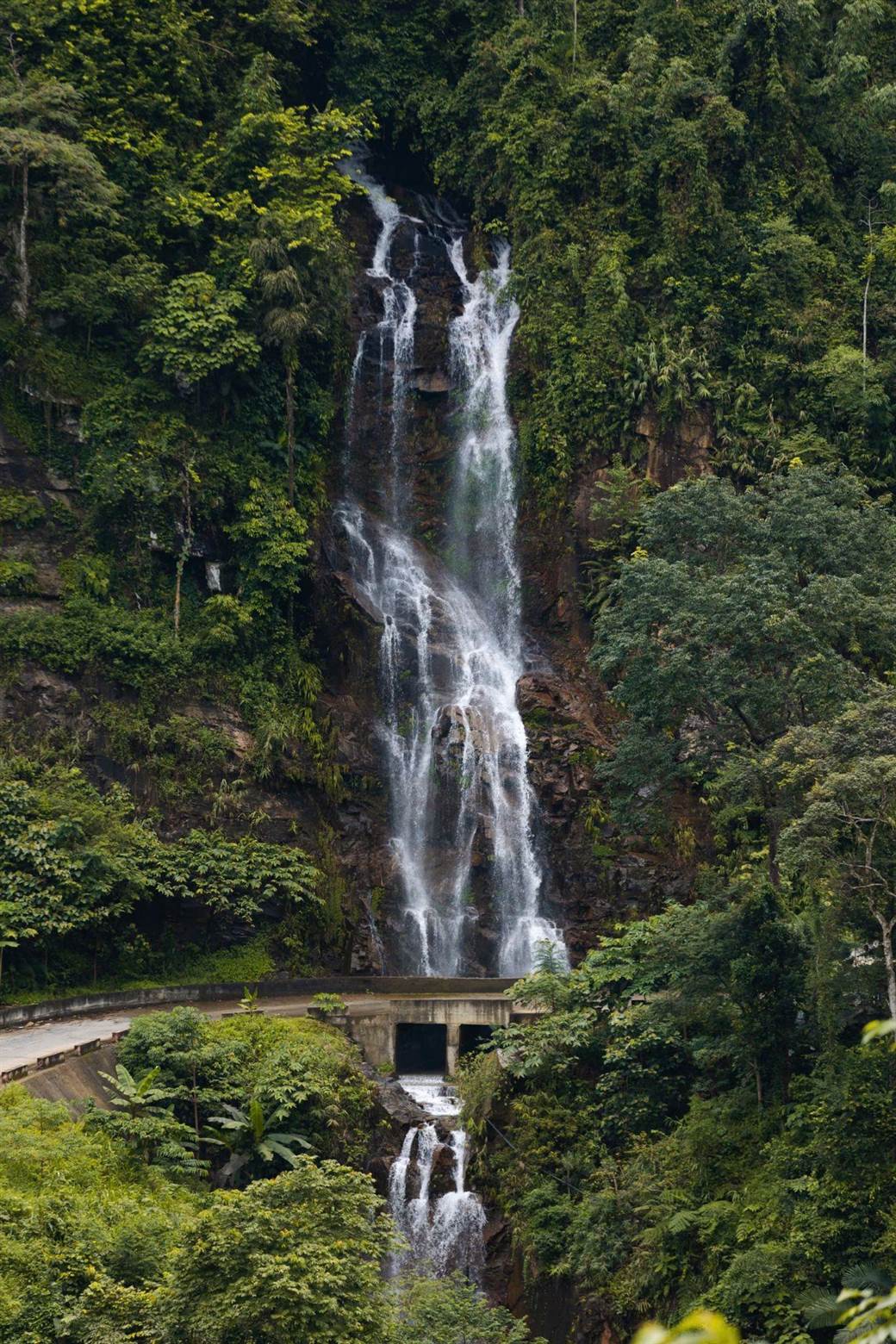
1.2 Daylight Hours and Seasonal Changes
July offers extended daylight hours, with the sun rising around 5:30 AM and setting near 7:00 PM. This generous 13.5-hour window provides ample time for riding and exploration, especially if you plan your activities around the afternoon rain patterns. Early mornings are particularly magical, as the rising sun burns through valley mist, creating ethereal scenes across the limestone karsts.
The seasonal transformation is most visible in the agricultural rhythms across the region. July marks the heart of the growing season, with rice paddies at their lushest green stage. Waterfalls and streams run at full capacity, and the mountains wear a vibrant, dense mantle of vegetation that softens their rugged profiles.
Weather conditions can vary significantly between different sections of the Loop due to elevation changes. Higher passes like Ma Pi Leng (1,500m) might be shrouded in clouds while lower valleys remain clear. This microclimatic diversity adds to the adventure but requires flexible planning and appropriate gear.
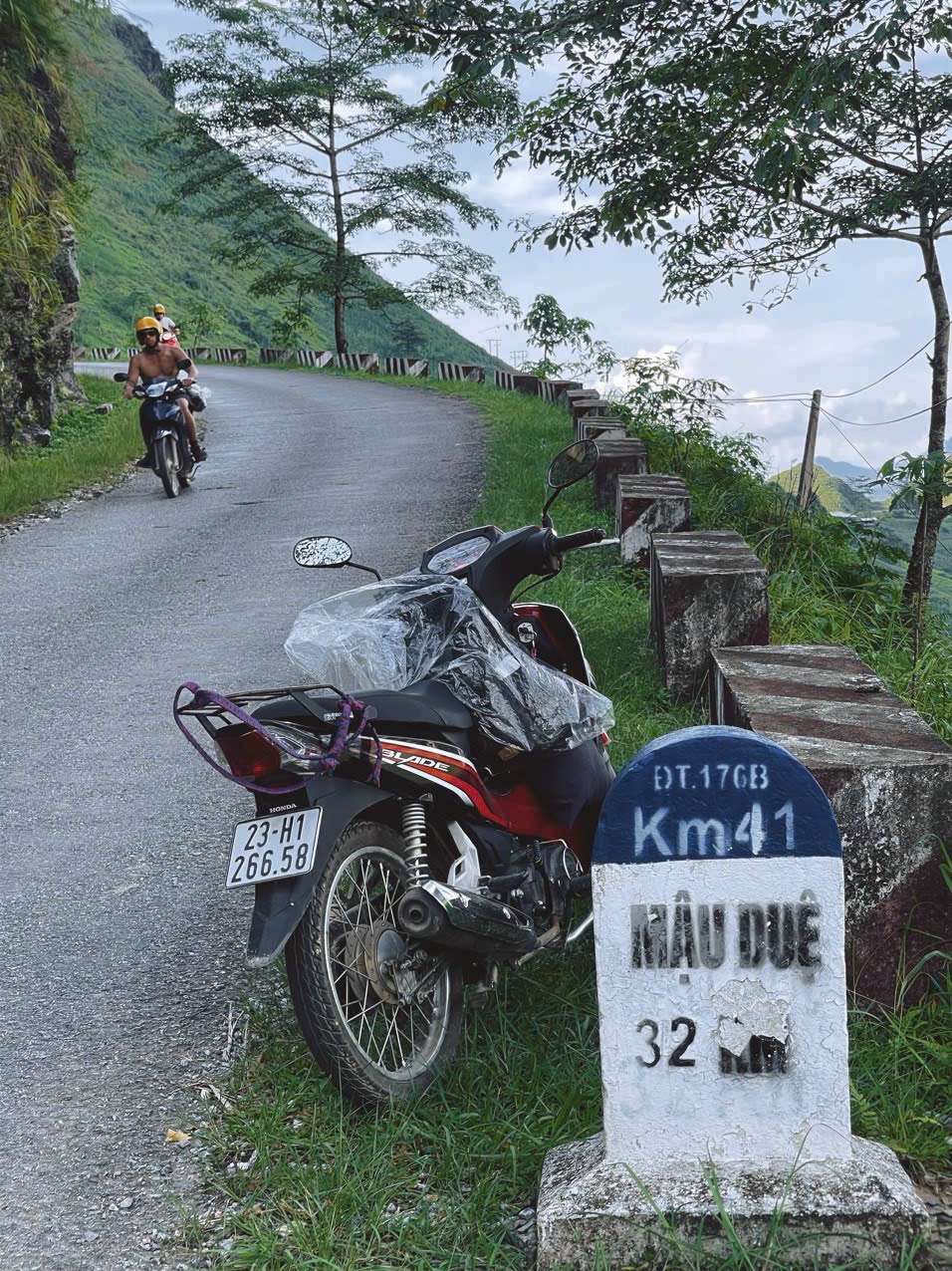
The Best Time to Visit Ha Giang: A Seasonal Guide to Flowers & Festivals
2. Pros and Cons: Should You Ride the Ha Giang Loop in July?
Making an informed decision about tackling the Ha Giang Loop during the rainy season requires weighing the unique advantages against potential challenges. Let’s examine both sides to help you determine if July aligns with your travel preferences and comfort level.
2.1 Scenic Highlights (Terraces, Waterfalls, Rivers)
July transforms the Ha Giang landscape into a photographer’s paradise of vibrant greens and dramatic water features. The rice terraces around Hoang Su Phi and Xin Man reach their most verdant state, creating mesmerizing patterns that cascade down mountainsides. These emerald staircases contrast beautifully with the dark limestone karsts that define the region.
Water becomes a dominant feature during this season, with numerous seasonal waterfalls appearing along roadways. The iconic Nho Que River runs at its fullest and most vibrant turquoise, creating spectacular views from the Ma Pi Leng Pass. The river’s increased volume makes boat trips through Tu San Canyon especially memorable, with the emerald waters contrasting dramatically against the towering canyon walls.
The countryside brims with life as local farmers work in their fields, buffalo cool themselves in streams, and flowers bloom across the highlands. This living landscape offers authentic cultural experiences and photographic opportunities rarely available in drier months when the terrain appears more austere and brown.
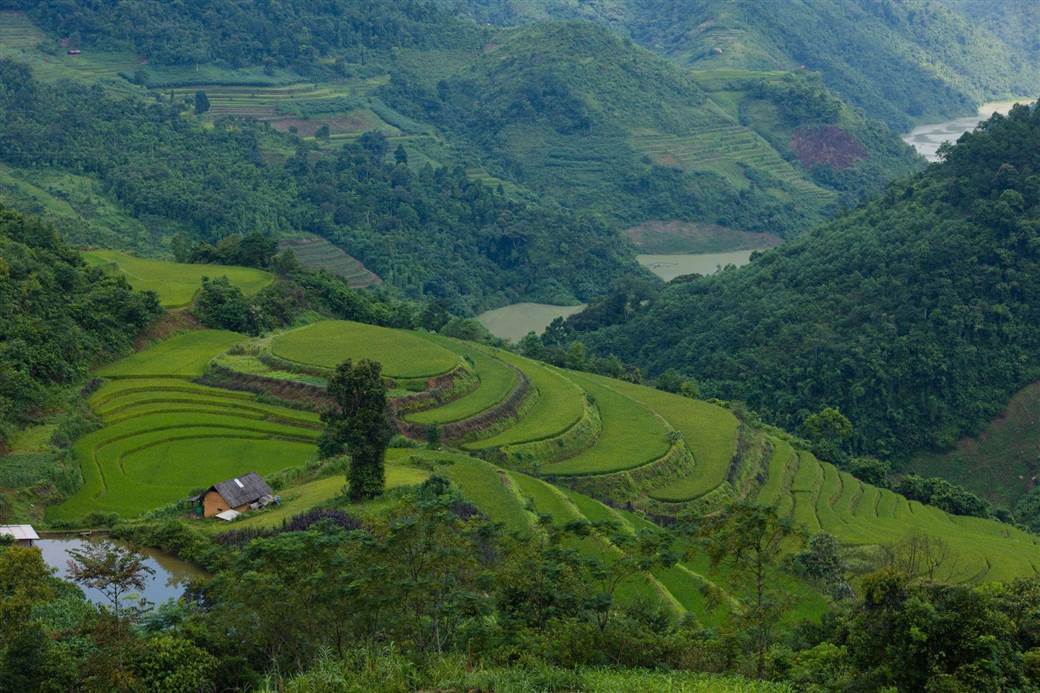
2.2 Rainy Hazards and Road Conditions
The beauty of July comes with significant challenges for travelers, particularly related to road safety. Heavy rainfall can trigger landslides and rock falls on mountain passes, occasionally blocking routes or creating hazardous riding conditions. The famous limestone karst geology that makes Ha Giang spectacular also makes it vulnerable to erosion during heavy rains.
Road surfaces become slippery, particularly on unpaved sections and around curves. Mud and loose gravel present serious hazards for inexperienced riders. Visibility can drop dramatically during downpours, with fog and low clouds further complicating navigation through mountain passes like Ma Pi Leng, Tham Ma, and Heaven’s Gate.
Flash flooding occurs in valley areas, sometimes making river crossings dangerous or impassable for hours after heavy rain. Weather conditions can change rapidly, requiring flexible itineraries and contingency plans. Despite these challenges, with proper preparation and reasonable caution, thousands of travelers successfully navigate the Loop during July each year.
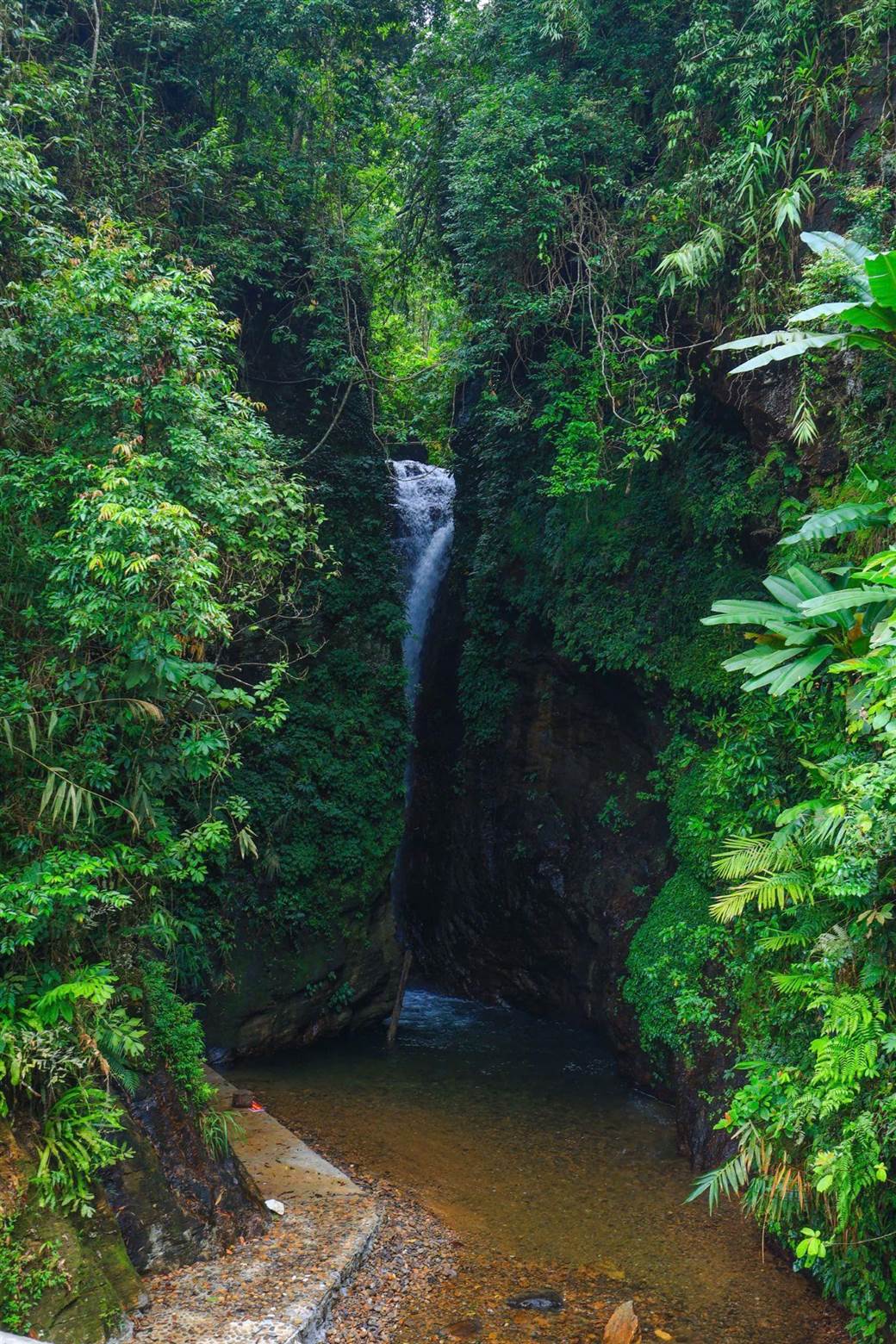
3. Essential Packing List for July on the Ha Giang Loop
Preparing appropriately for Ha Giang’s summer monsoon conditions can make the difference between a miserable experience and an unforgettable adventure. Your packing strategy should prioritize staying dry while maintaining comfort in warm, humid conditions.
3.1 Waterproof Gear and Clothing
Quality rain protection stands as your most critical investment for a July journey. A durable, breathable waterproof jacket with sealed seams will serve as your primary defense against sudden downpours. Pair this with waterproof pants that can be quickly pulled over your regular clothing when rain approaches.
For motorbike riders, waterproof gloves and shoe covers provide additional protection for extremities most exposed to the elements. A rain poncho serves as an excellent backup layer that can cover both you and a backpack during especially heavy rainfall. Store these items in easily accessible locations for quick deployment when clouds gather.
Moisture-wicking base layers help manage the high humidity, while quick-dry clothing allows you to remain comfortable after rain stops. Pack multiple changes of lightweight clothing, as the combination of sweat and rain means garments rarely dry completely overnight in July’s humid conditions.
3.2 Safety & Emergency Essentials
Safety equipment becomes even more critical during the rainy season. A quality helmet with a clear visor protects against both accidents and driving rain. Consider adding ziplock bags or waterproof cases for electronic devices, documents, and valuables, as water damage represents a common travel casualty.
A basic first aid kit should include blister treatment, antiseptic, bandages, and any personal medications. Include emergency contact information for local hospitals and your accommodation providers. A portable battery pack ensures your phone remains operational for emergencies, even if charging opportunities become limited by power outages.
Navigation tools gain importance during reduced visibility conditions. Download offline maps of the region before departure, and consider bringing a physical map as backup. A reliable flashlight or headlamp proves invaluable during power outages or when returning to accommodations after sunset.
How to get a visa for Vietnam complete 2025 guide
4. Top Sites and Events in July
Despite and sometimes because of the rainy season conditions, July offers unique experiences at many of Ha Giang’s most celebrated destinations. The changing weather transforms familiar landmarks and provides special access to seasonal attractions.
4.1 Hoang Su Phi Water Season
Hoang Su Phi district reaches its scenic peak during July’s water season, when terraced rice fields achieve their most vibrant green hues. The Ban Luoc and Nam Hong communes offer particularly spectacular vistas, with countless layers of rice terraces wrapping around mountainsides. Morning mist often hovers between terraces, creating dreamy, otherworldly scenes perfect for photography.
Local ethnic minority groups, primarily Dao and H’mong farmers, can be seen tending their crops throughout the district. This agricultural activity provides opportunities for cultural exchange and understanding of traditional farming methods. The increased water flow enhances numerous streams and small waterfalls throughout the area, many accessible via short hikes from the main road.
Visiting Hoang Su Phi in July requires additional travel time due to occasionally challenging road conditions, but rewards visitors with scenes rarely witnessed by those traveling during the high season. Early morning departures maximize viewing opportunities before afternoon rains arrive.
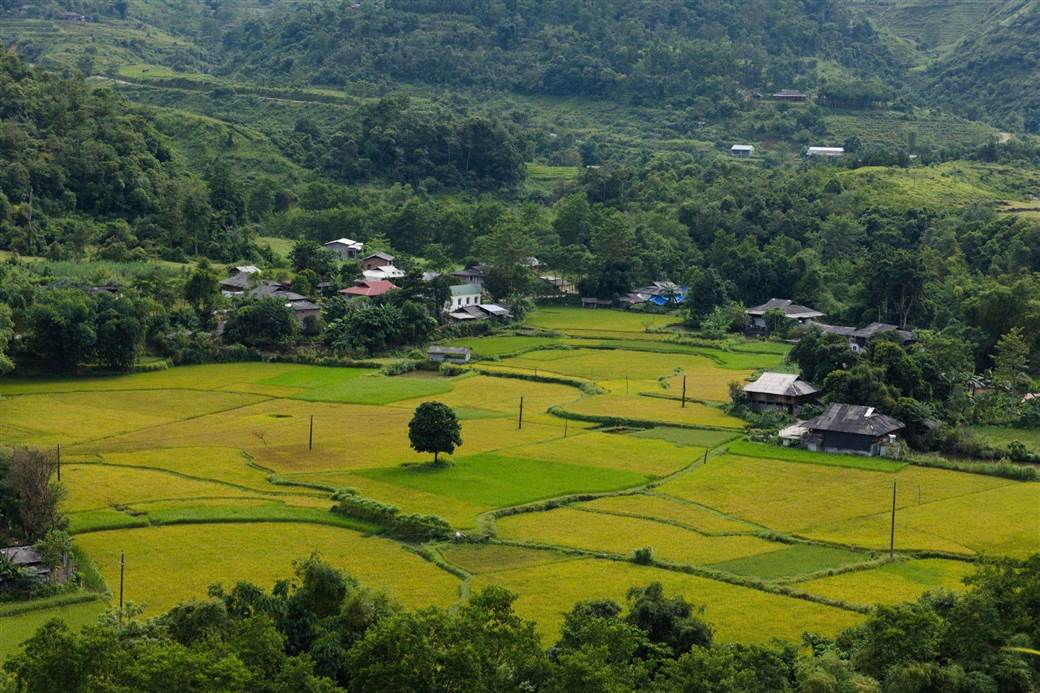
4.2 Local Festivals and Markets
July coincides with several local celebrations tied to the agricultural calendar. The Lồng Tồng Festival (Field Opening Festival) takes place in various Tày communities, featuring rituals to ensure good harvests. These ceremonies typically include traditional music, dance performances, and communal feasts that visitors may be welcomed to observe or even participate in.
Sunday markets continue operating regardless of weather, with the Đồng Văn and Mèo Vạc markets being particularly lively during summer months. Local vendors sell fresh produce, handicrafts, and specialty items beneath colorful umbrellas and tarpaulins that create vibrant scenes even during rainfall. The markets offer excellent opportunities to sample regional cuisine and purchase authentic souvenirs directly from artisans.
Traditional craft villages like Lùng Tám, famous for its linen production, remain active during July. Watching artisans transform hemp into textiles using centuries-old techniques provides insight into cultural traditions still practiced in Ha Giang’s remote communities.
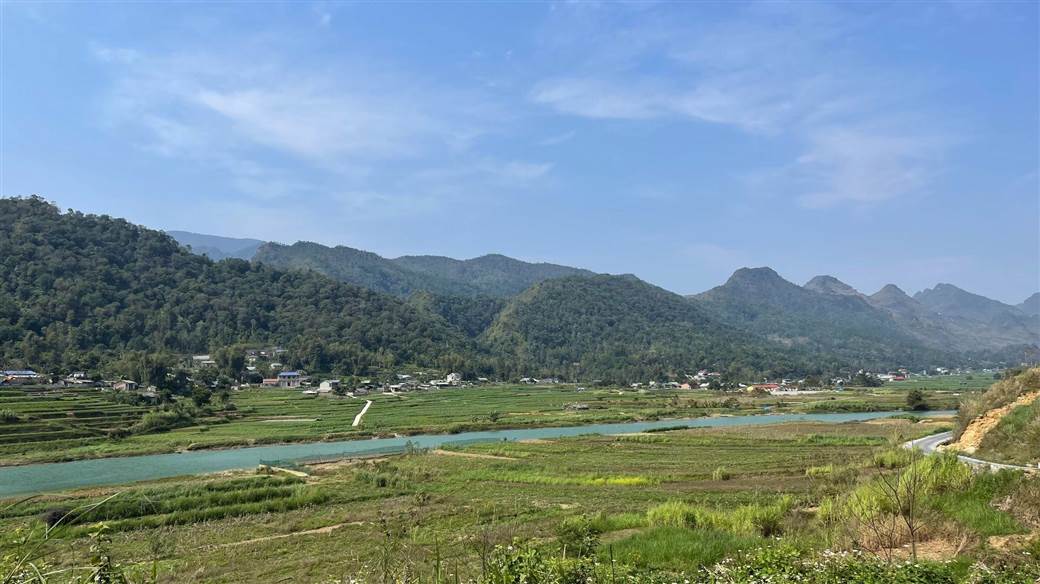
4.3 Adventure Spots (Tham Ma Slope, Nho Que River, Tu San Alley)
The iconic Tham Ma Slope takes on a more dramatic character during July, with mist frequently enveloping its serpentine curves. This atmospheric addition transforms the already impressive road into an almost mystical experience, though it demands cautious driving. The vantage points along this famous stretch offer spectacular views across valleys now vibrantly green and occasionally disappearing into clouds.
Nho Que River reaches its most vibrant turquoise hue during July, swollen with rainwater yet maintaining its distinctive color. Boat tours through Tu San Canyon become particularly dramatic, with the increased water volume and occasional mist creating an almost primeval atmosphere between the towering canyon walls. Remember that boat operations may temporarily suspend during extremely heavy rainfall.
The Ma Pi Leng Pass, Vietnam’s most spectacular mountain road, presents a constantly changing vista in July as clouds roll through the landscape. Patient photographers can capture extraordinary images as gaps in the clouds reveal sections of the scenery below. While visibility isn’t guaranteed, the dramatic interplay of mountains and weather creates unique visual opportunities unavailable in clearer seasons.
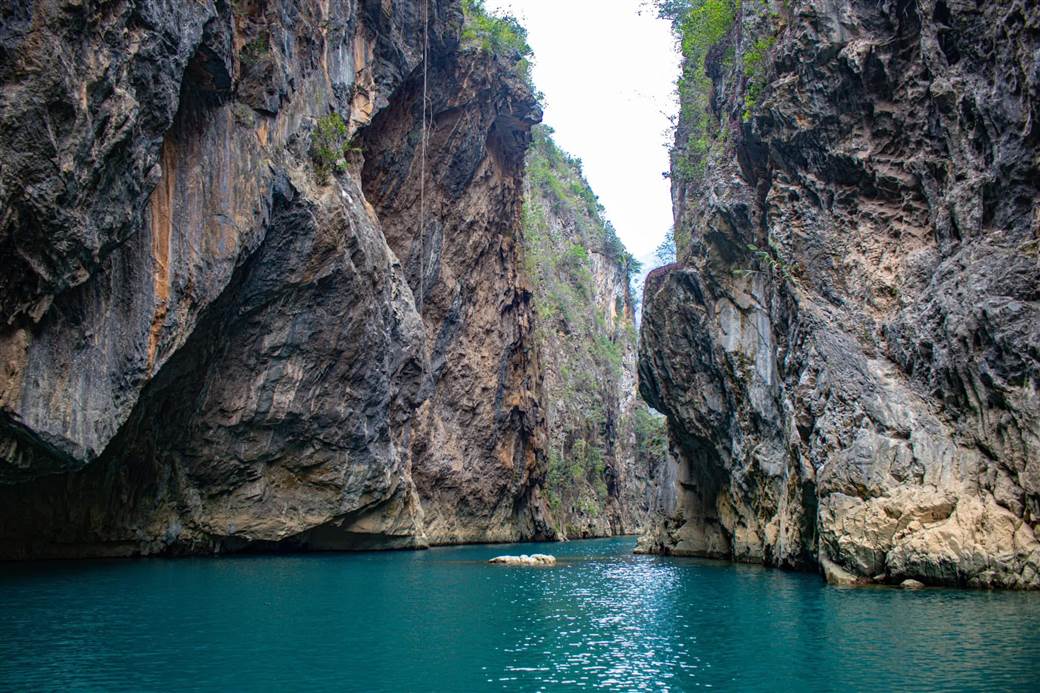
5. Safety Tips & Risk Management During Rainy Season
Enjoying Ha Giang’s rainy season beauty requires respecting its increased risks. With proper preparation and risk management, you can safely navigate the challenges while embracing the unique experiences this season offers.
5.1 Road Risks (Landslides, Slippery Paths)
Heightened awareness becomes your primary safety tool during July travel. Watch for warning signs of potential landslides, including fresh debris on roadways, water running across the road surface, or unusual cracks in hillsides above routes. After heavy rainfall, wait several hours before traversing sections with steep surrounding slopes.
Adjust your riding technique for wet conditions by reducing speed, avoiding sudden braking or acceleration, and maintaining greater distance between vehicles. When encountering mud, maintain steady throttle without sudden movements. Experienced riders from Phieu Travel recommend following tracks left by previous vehicles through muddy sections rather than attempting to forge new paths.
Be particularly cautious on unpaved sections and around sharp bends where loose material may have washed onto the roadway. Wooden or metal bridges become extremely slippery when wet, warranting extra care when crossing. If a road section appears dangerously compromised, never hesitate to turn back and seek alternative routes.
5.2 How to Check Forecasts and Avoid Hazards
Reliable weather information becomes crucial during the rainy season. Download weather apps that function offline, as connectivity becomes limited in remote areas. The Norwegian Weather Service (YR) and AccuWeather provide relatively accurate forecasts for the region, while local sources like the Vietnam Meteorological Department offer broader regional predictions.
Consult with locals each morning about current conditions and recent weather events affecting upcoming route sections. Guesthouse owners, café operators, and Phieu Travel guides maintain networks of contacts along the Loop who share information about road hazards and closures. Their knowledge often proves more valuable than official forecasts.
Plan each day’s journey with contingency options in mind. Identify potential shelter points along your route where you could wait out passing storms. Maintain flexible scheduling that allows for unexpected delays, and never pressure yourself to complete specific distances regardless of conditions.
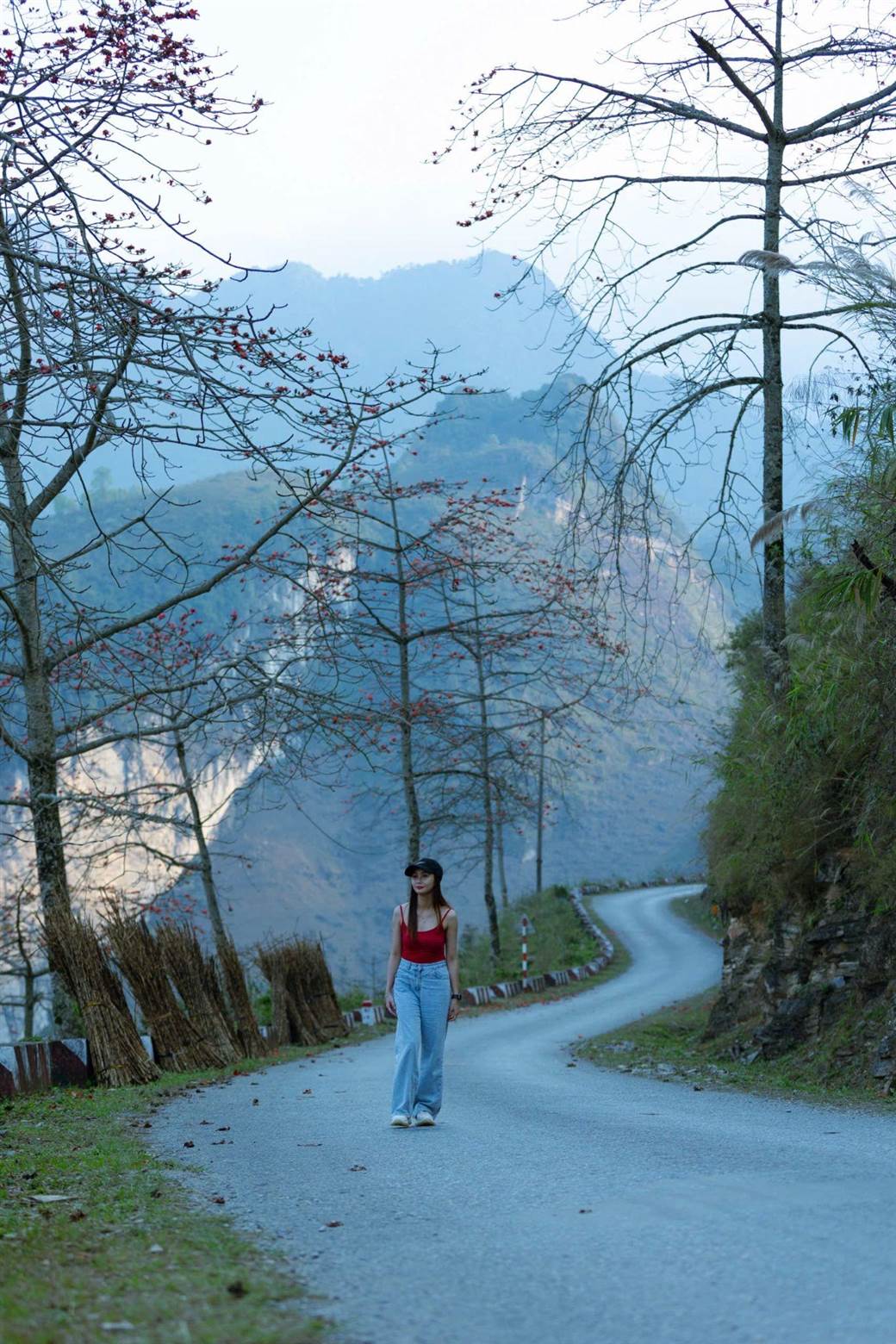
6. FAQs: Traveling Ha Giang Loop in July
As experienced guides through Ha Giang’s changing seasons, we’ve compiled answers to the most common questions travelers ask about July journeys on the Loop.
6.1 Best Time of Day to Ride
Early morning offers the most reliable conditions for July travel on the Ha Giang Loop. Setting out between 6:00-7:00 AM maximizes riding time during the clearest weather window. Morning hours typically feature better visibility, drier road surfaces, and more comfortable temperatures before humidity builds throughout the day.
Statistical patterns show that rainfall most commonly occurs between 2:00-5:00 PM, making afternoon planning critical. Schedule your route to reach accommodation or indoor activities by early afternoon whenever possible. If caught on the road during a downpour, find safe shelter rather than continuing through limited visibility.
Photography enthusiasts should note that early mornings often feature magical lighting conditions as sunlight filters through valley mist. This creates opportunities for stunning landscape shots that compensate for the schedule adjustments required by afternoon rain.
6.2 Health & Comfort Tips
The combination of heat and humidity makes hydration essential during July travels. Drink more water than you think necessary, as perspiration increases dramatically in these conditions. Electrolyte supplements help replace minerals lost through increased sweating, preventing cramping and fatigue.
Protect against insect activity, which peaks during the rainy season. Apply effective repellent regularly, particularly around ankles and wrists. Light, long-sleeved clothing provides additional protection while preventing sunburn during clear periods. Consider treating outer garments with permethrin for additional insect protection.
Maintain meticulous personal hygiene to prevent skin irritations that develop quickly in humid conditions. Talcum powder helps manage moisture in skin folds, while changing into dry clothes whenever possible reduces discomfort. Pack anti-fungal cream as a precaution against common humidity-related skin issues that can quickly diminish travel enjoyment.
The Ha Giang Loop in July reveals a dramatically different face of Vietnam’s northern frontier – one of intense greens, flowing waters, and atmospheric mountain scenes draped in mist. While the challenges of rainy season travel demand respect and preparation, they reward adventurous travelers with unique landscapes and cultural experiences missed by high-season visitors.
At Phieu Travel, we’ve guided countless summer journeys through these highlands, witnessing firsthand how July’s weather transforms familiar landmarks into new experiences. The lush rice terraces, powerful waterfalls, and the special quality of light after rainfall create photographic opportunities unmatched in drier months. For those willing to adapt to nature’s rhythm rather than fighting against it, the Loop offers profound connections with both landscape and local culture.
Your July adventure requires flexibility, appropriate gear, and reasonable expectations about weather conditions. In return, you’ll experience Ha Giang at its most vibrant and authentic, without the crowds that sometimes diminish the region’s remote character. Whether capturing the perfect photograph of mist-shrouded karsts or sharing stories with local farmers during a rainfall shelter stop, these moments become the unique memories that distinguish a truly extraordinary journey.
Ready to experience the unique beauty of the Ha Giang Loop in July? Visit Phieutravel.com to explore our specially designed rainy season tours led by experienced local guides who know exactly how to maximize the benefits while minimizing the challenges of summer travel in Vietnam’s most spectacular highland frontier.
Read more:
- Ha Giang weather by month complete local guide for travelers
- Lung Ho, Ha Giang complete guide to Vietnam’s Hidden Gem
- Best places to visit in Northern Vietnam a complete 2025 guide

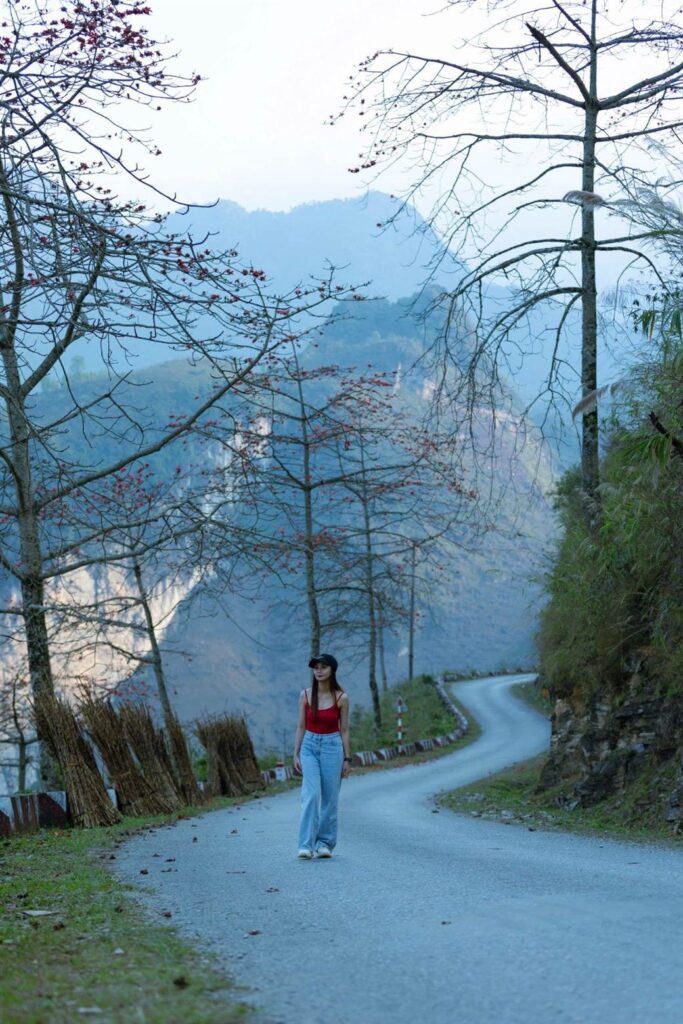
You Might Also Like
Ha Giang Weather in September: Complete Guide for Travelers
Exploring the magnificent Ha Giang Loop in September offers travelers a perfect balance of favorable[...]
Quan Ba Twin Mountains: Ha Giang’s Iconic Fairy Hills and Complete Travel Guide
The mystical Quan Ba Twin Mountains rise from the emerald valleys of Ha Giang like[...]
Vuong family mansion: the architectural marvel and cultural legacy of Ha Giang
Deep in Vietnam’s northern highlands, where mist-shrouded mountains meet terraced rice fields, stands a testament[...]
Ha Giang Loop Safety Tips: How to Ride Securely in Vietnam’s Northern Mountains
The Ha Giang Loop, with its winding mountain roads and breathtaking landscapes, offers one of[...]
The Ultimate Guide to the M-Shaped Curve on Ha Giang Loop
Vietnam’s remote northern province of Ha Giang hides a natural wonder that has captivated adventurous[...]
Most Beautiful Places to Visit in Vietnam: Essential Destinations and Insider Tips
Vietnam captivates travelers with its stunning landscapes, rich cultural heritage, and warm hospitality. From mist-shrouded[...]
Beyond the Beaten Path: Discovering Ha Giang Province in Northeast Vietnam
Ha Giang Province in Northeast Vietnam stands as one of the country’s last frontiers for[...]
Rainy season in Ha Giang: what to expect, when to go, and travel tips
Vietnam’s northern frontier reveals a different face during the rainy season, transforming Ha Giang’s limestone[...]